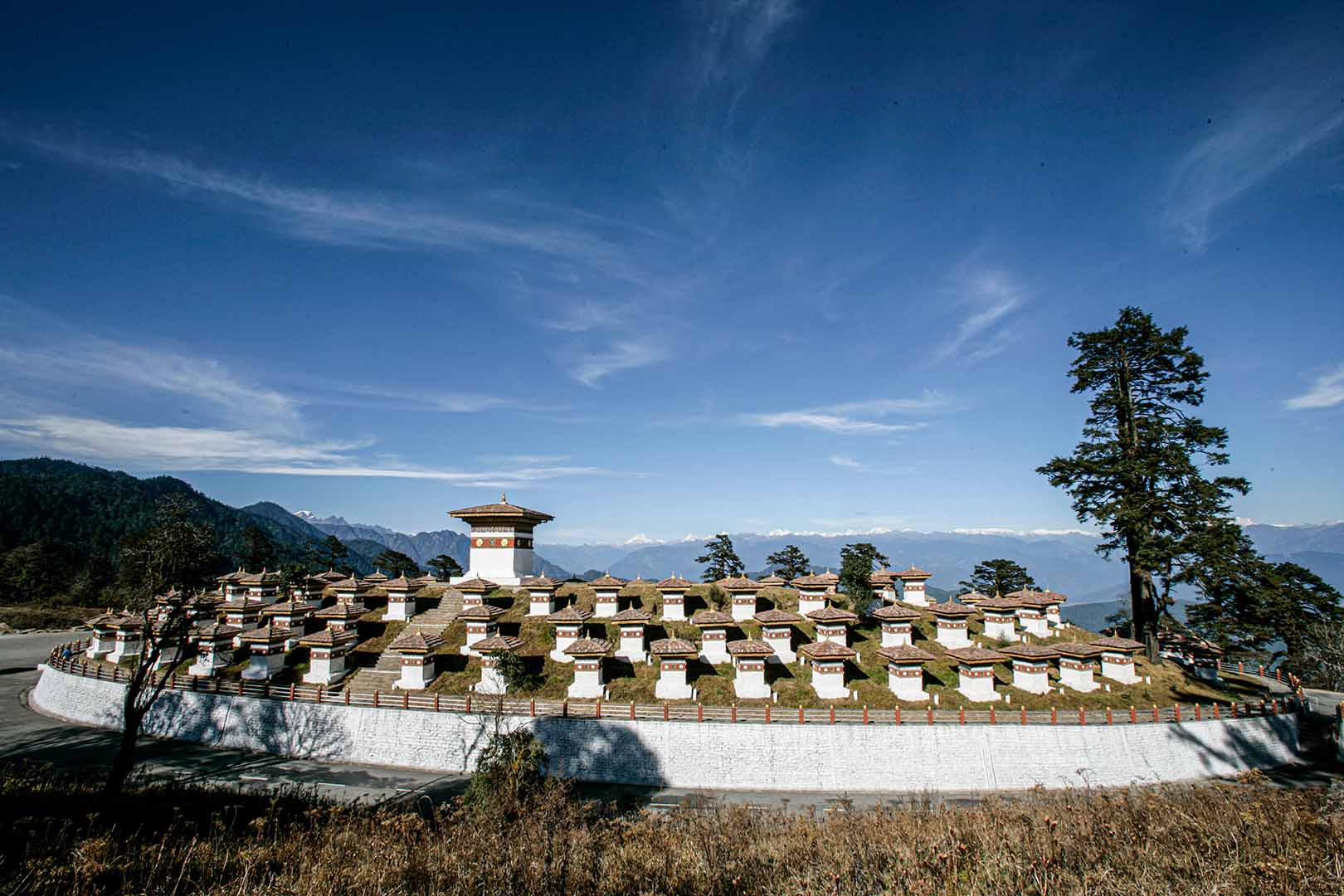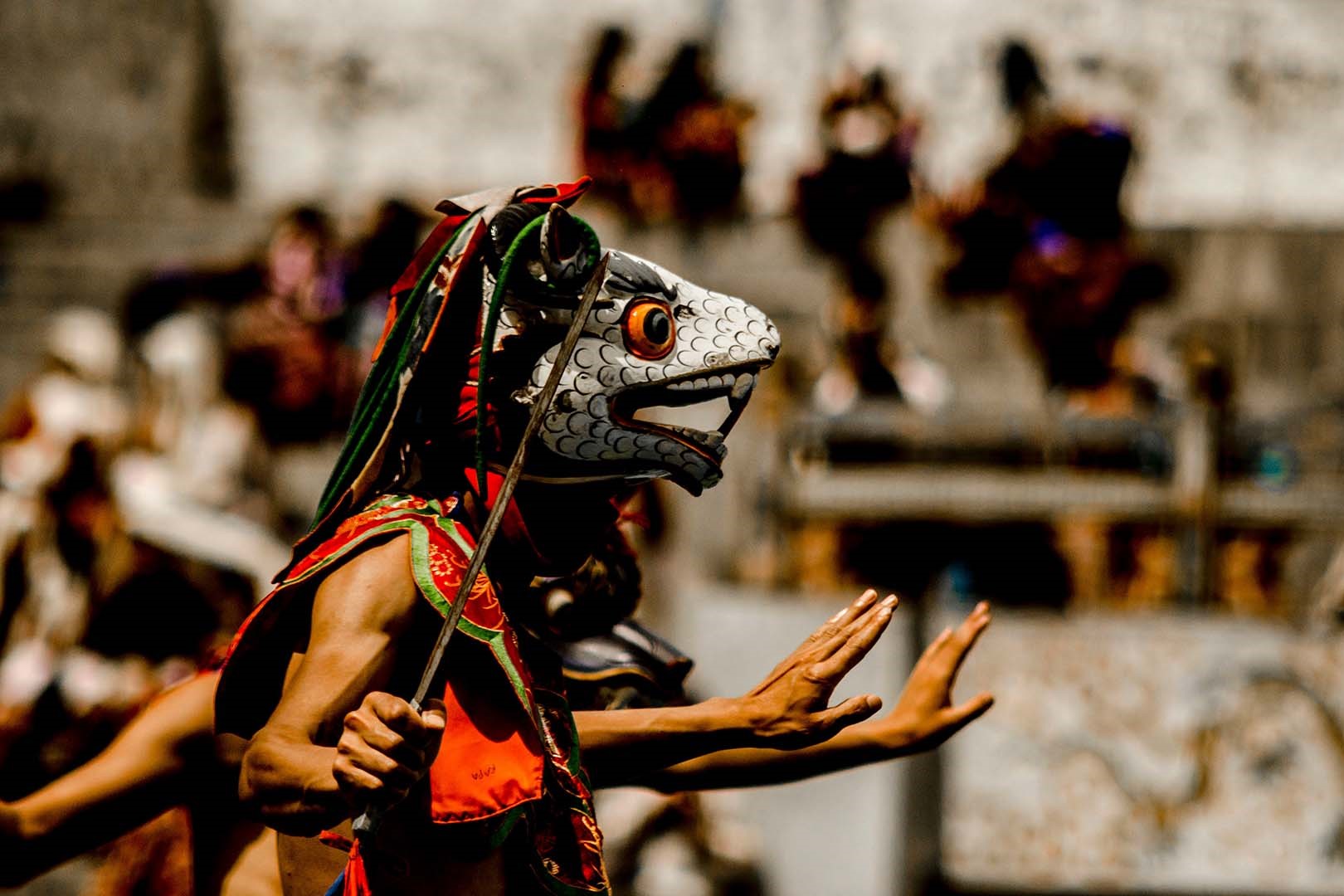Dochula Pass

Dochula Pass
The Dochula Pass is a historical landmark built to honour the bravery and sacrifices of the fourth king and the soldiers who perished during the battle against Assamese insurgents in 2003. It particularly marks the victory of King Jigme Singye Wangchuck. After the war, the King went back to Thimphu on 28 December 2003. Ashi Dorji Wangmo Wangchuck commanded for the 108 chortens to be built. The construction of the chortens was completed in mid-June 2004 and formally consecrated and sanctified with religious rites on 19–20 June 2004.

Geography of Dochula Pass
Dochula Pass is situated at an elevation of 3,100 meters (10,200 ft) on the East-West Road, connecting Thimphu to Punakha and the Eastern Himalayas. To the east, visitors can view the snow-covered Himalayan peaks, including Bhutan’s highest peak, Mt. Gangkar Puensum (7,158 meters/23,484 ft). The road eastward descends steeply and turns left toward Punakha Valley, leading to Punakha Dzong, the ancient capital of Bhutan, situated at the confluence of two rivers. Continuing east, the road reaches Wangdi Phodrong, home to a 7th-century monastery. Historically, the pass was part of ancient trails like the Dochu La Nature Trail (1.2 km) and Lumitsawa Ancient Trail (4.7 km), which connected Thimphu and Punakha.

The Best Time to Visit Dochula Pass
The weather at Dochula Pass is usually foggy and chilly. However, from October to February, visitors can enjoy panoramic views of the Bhutan Himalayas. To know the best time to visit Bhutan, be sure to check the details.
The pass slopes are covered with cypress trees and adorned with vibrant religious flags, a mark of Buddhist reverence. These five-colored flags—blue (sky), white (clouds), red (fire), green (water), and yellow (earth)—carry Buddhist prayers to bring prosperity and peace. After the Losar festival in February, which marks the Bhutanese New Year, the snow melts, and a variety of flowers bloom, including Primula denticulata and Primula bracteosa. Rhododendrons bloom shortly after, followed by the fragrant Magnolia campbellii. Additionally, the Daphne shrub, which has white flowers, blooms among the prayer flags. The bark of this plant is traditionally used to make termite-free paper for writing religious scriptures.

Similar Attraction Places
Tours you Might be Interested
Explore the mystical beauty of Bhutan with our exclusive tour package, featuring breathtaking landscapes, rich cultural heritage, and serene monasteries. Experience the charm of Thimphu, Paro, and Punakha, with guided tours, comfortable accommodations, and unforgettable memories!
- 5 Days Luxury Tour in Bhutan
- 3 Days Bhutan Tour
- Paro Festival Tour
- Bhutan Photography Tour
- Chelela Trek
- Visiting Bhutan in November
- Home Page







